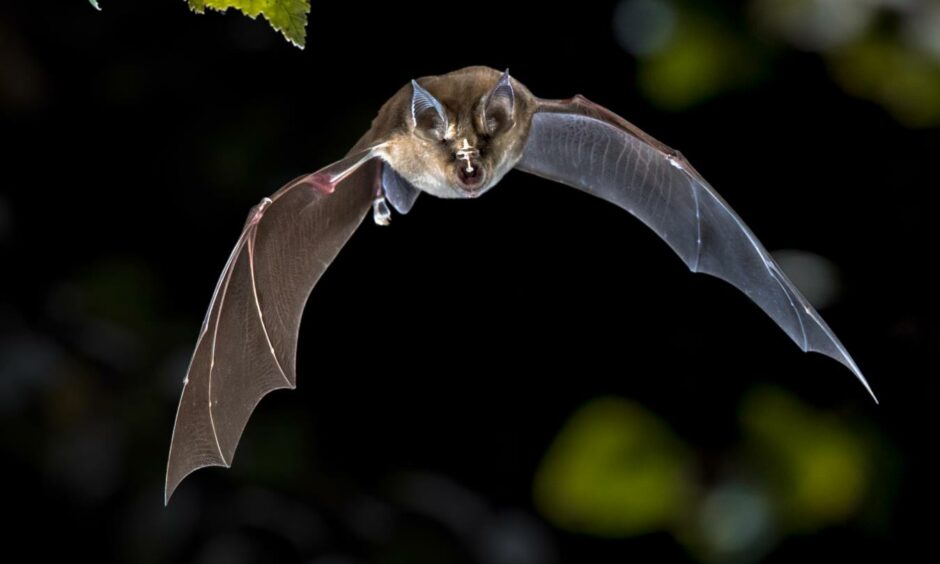Dusk by my local river – and bats should be beginning to stir by an old bridge, but the only movement are trout rising to snap up mayflies that brush the water’s surface.
I wait a bit longer, and then, only inches above the trout-rippled water a bat flickers and swerves.
Another one appears, and then another, and within a matter of seconds the river is alive with tumbling bats.
The mayflies are now under sustained attack from trout and bats in an insect feast in the gloaming.
I turn on my electronic bat detector, and the earphones fill with a marvellous mix of rapid-fire staccato clicks from their echolocation calls.
Ingenious device
The bat detector is an ingenious hand-held device that picks up the ultrasonic calls of bats as they hawk for insects and converts them into sounds that can be heard readily by the human ear.
The detector also provides information on the frequency range of the calls, which is an important means for identifying species when on the wing.
These calls were coming in at just below 50 kHz, which combined with their behaviour of swooping low over the water, made me deduce they were Daubenton’s bats.
This river-loving species is habitually late in leaving their daytime roosts compared to some other types, which further confirmed my identification.
Bats are enigmas, the only mammals that fly and their nocturnal habits further add to their mystique.
18th century fascination
Gilbert White, the pioneering 18th century English nature diarist, was fascinated by bats, and wrote of knowing two species – the pipistrelle and the long-eared bat.
In his seminal book, The Natural History of Selborne, he recounted about being much entertained by a tame bat, which would take flies out of a person’s hand.
“The adroitness it showed in shearing off the wings of flies, which were always rejected were worthy of observation and pleased me much.
“Insects seemed to be most acceptable though it did not refuse raw flesh when offered: so that the notion that bats go down chimneys and gnaw men’s bacon seems no improbable story.”
I suspect house mice were the culprits of bacon gnawing at the time, for bats don’t often enter houses, and bacon would be the last thing on a bat’s mind should one inadvertently tumble down a chimney.
The following day, I ventured out with my bat detector once more, this time to a small burn that runs through woodland behind my house.
The detector buzzed into action – clicks that were peaking at 55 kHz.
These are soprano pipistrelles, which also having a liking for areas by water.
It was only as recently as the 1980s that it became clear that the widespread pipistrelles in Britain comprised of two species, rather than one.
This made me ponder: if we are still finding new mammal species in Britain in modern times, how many other species of mammal are still to be discovered in other parts of the world? And how many will become extinct before we are even aware of their existence?












Conversation